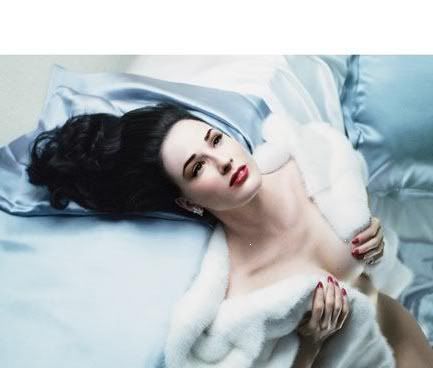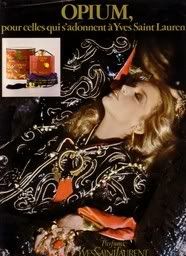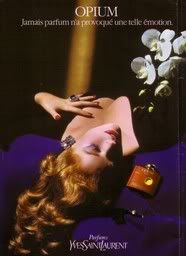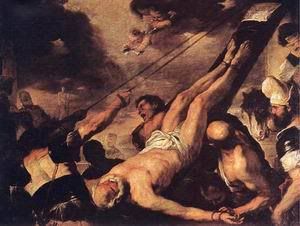Shalimar...its sonorous name reverberates long after its smell has evaporated, conjuring images of prodigal sensuality and old-fashioned romanticism like no other; holding us spellbound in a mirage of forbidden dreams.
.jpg) Beginnings With a Legal Battle No Less
Beginnings With a Legal Battle No Less
And yet, the very name which means "temple of love" in Sanskrit, was jeopardised soon after the perfume's introduction in 1921! It proved to be so memorable that a rival company decided to cash in on its popularity and launch a perfume of the same name. This resulted in a legal battle which had Guerlain temporarily rebaptise the fragrance as
No.90 (its number in the illustrious catalogue of the house) on their export bottles, thus rendering them rare collector's items. Luckily for us, things soon fell into their ordained place in 1925, marked as the year of the official launch, and
Shalimar haunts our dreams to this day, being the progenitor of culinary fragrances with its plush vanilla but also an iconic true oriental with its deep
labdanum shadows. A quintessentially French interpretation of an Oriental: It's no accident than even Ernest Beaux, no ordinary perfumer himself, complained: "When I do vanilla I get crème anglaise, when Guerlain does it he gets
Shalimar!"
The Legend of the Creation & Its Times
In the best Guerlain tradition of evoking passionate love stories for most of their perfumes,
Shalimar is said to be inspired by
the homonymous Gardens in Lahore, Pakistan,
part of which was laid by love-sick Mughal Emperor Shah Jehan in 1619, where he promenaded with his most beloved wife Mumtaz Mahal. After Mumtaz died in childbirth three years after her husband succeeded his father to the throne, Taj Mahal was built as the world's finest mausoleum in her honour in Agra. Even if this story is the brainchild of a brilliant copywriter, it resonated with the times perfectly.

Today the East stands in our Western mind as the symbol of tranquility and introspection, but in the roaring 1920s the East conjured up images of unbridled passion, exoticism, khol-eyed beauties and addictive substances. It was the time when Herman Hesse published
Siddharta, the West's first glimpse of Buddhism, and F.Scott Fitzgerald
The Great Gatsby, a paean to the newly established American prosperity and its pitfalls. Theda Bara had already lain the path to cinematic vamps to follow, such as Pola Negri and
Clara Bow with her bloody-red dark cupid's lips immortalised on black and white vignettes, while Paul Poiret had produced his own phantoms of the harem paving the way to modern fashions. It was the time of Les Ballets Russes, set to music by Stravinsky and Poulenc with sets painted by Picasso and Georges Braque. In short Orient was meeting Occident at the seams.
The Secrets of the Shalimar Formula
It was at this juncture in time
Jacques Guerlain was intrigued by the newly popularised synthetic vanillin or Methoxy-3-Hydroxy- Benzaldehyde.
Vanillin was first isolated as a relatively pure substance in 1858 by
Nicolas-Theodore Gobley, by evaporating a vanilla extract to dryness and recrystallizing the resulting solids. In 1874, German scientists
Ferdinand Tiemann and
Wilhelm Haarmann found a way to synthesize vanillin from coniferin, a glycoside of isoeugenol found in pine bark (they went on to found a company which now belongs to Symrise and produce it industrially). In 1876,
Karl Reimer synthesized vanillin from another source:
guaiacol. The laboratories De Laire bought the patent for vanillin and sold the product to Guerlain for their perfumery, first used in
Jicky.
By the late 19th century, semi-synthetic vanillin derived from the
eugenol found in clove oil was available in the market. After the 1920s vanillin was synthesized from
lignin-containing "brown liquor", a byproduct of the sulfite process for making wood pulp, but for environmental reasons most vanillin produced today is made from the petrochemical
guaiacol: most popular method today is the two-step process practiced by
Rhodia (from 1970s onwards), in which guaiacol reacts with glyoxylic acid by electrophilic aromatic substitution. The resulting vanilmandelic acid is then converted to vanillin by oxidative decarboxylation. Vanillin proved to be so successful that it became the
sine qua non of the food industry, resulting in its inclusion to everything, especially in American produced chocolates and beverages; a concept that might be blasphemous to the traditional Swiss and Belgian ideas of chocolate making.
Jacques Guerlain always felt that
the aroma of vanilla was a powerful aphrodisiac, a notion that is almost a prerequisite of orientalia, and completely in synch with the demands of the times. So curious to see what would happen ~or so the story goes~ he dropped a large dollop of vanillin into a bottle
Jicky, Guerlain's revolutionary and popular aromatic fougère. But
Jicky already contained vanillin along with natural vanilla extract, as well as coumarin (a substance isolated from tonka beans in 1868, having the smell of cut hay) and linalool (a naturally occuring in over 200 species
terpene alcohol, isolated here from rosewood), its trio of guardian angels in the halls of fragrance history. The secret to the medicinal, smoky yellow vanillin of
Jicky, reprised in
Shalimar, was the remnants of guiacol and phenols, lending an autumnal darkness to what would otherwise be a confectionary sweet cream. This is the reason that Guerlain insisted on ordering the impure grade of vanillin even when the chemical process was improved.
It was the fusion of vanillin, coumarin and
opoponax along with
labdanum, however, which provided the basic accord of
Shalimar and accounted for its haunting aura.
Thus Jacques Guerlain pushed the oriental theme of Jicky to new extremes, creating the emblematic oriental and the flagship fragrance for Guerlain. Luca Turin in his older French guide compared its place in perfumery to the
Revolutionary Etude by Chopin: a classic loved and played to excess, but of which a new interpretation or a unexpected coming-across has the power to move even the most nonchalantly unconcerned.
 How Shalimar Smells the Way it Does
How Shalimar Smells the Way it Does
Guerlain's
Shalimar opens with the violent zest of bergamot, backed up by sweeter hesperidic accents, quickly melding into an embrace of flowers that soon set the stage for the sensual and warm undercurrent of the muskily sexy base. The bridge of patchouli and vetiver, with a touch of what seems like mediterranean thyme, provides the movement that compliments the chilly astrigent feel of the citrus, uniting the prickly, balsamic elements of the drydown with a dash of leathery quinolines (materials with a harshly pungent, bitter green scent) into a sustained
basso continuo that endures for hours; on skin as well as on clothes.
Shalimar's feminine beauty comes from the orchestration of its softly powdery and animalic elements that heave like an ample bosom: the golden dust of heliotrope, the hazy veil of opoponax, the balsamic goodness of warm, slightly spicy benzoin and Peru balsam mingling with the vanillic softness, the carnality of musk...You can wear this clad from head to toe and it still seems like you're completely naked.
Comparing Vintage & Modern Versions of Shalimar
In vintage formulations, the bergamot is brighter (and natural) and the muskiness more pronounced, rendering
Shalimar a very sexy fragrance that is unashamedly and calculatingly seductive: according to Roja Dove" it was said that a lady didn't do three things: smoke, dance the tango and wear
Shalimar". Never was a perfume so close to the edge of respectability while remaining within good taste.
Later re-interpretations, especially in recent years, have detructed from the animalic element of the base, due to substitution of ingredients (the catty potency of civet in particular, as well as making the bergamot top synthetic due to photosensitizing concerns) and additionally conformity to modern tastes for lighter fragrances. The result nevertheless is harsher, thinner and with a less "flou", plush ambience about it.
The
extrait de parfum used to be the undoubtedly supreme choice in
Shalimar, the epitome of a dark oriental, while the Eau de toilette and Eau de parfum were lesser mortals; but in the interests of securing a rich-smelling vintage bottle I highly recommend the
Parfum de Toilette concentration that circulated during the 1980s: it presents the best aspects of the vintage with a price-tag that can be met (bottle depicted in the above ad). Also, if you happen across an
eau de cologne bottle, don't knock it: it probably comes from the 60-70s and it is as potent and as rich as a current Eau de Parfum concentration of any given fragrance.
Bottle Designs & How to Date Shalimar editions
Throughout its life,
Shalimar extrait de parfum continued to be sold in its original crystal bottle with blue glass stopper the shape of a
ventaille. The original urn shaped flacon was designed by Baccarat in 1925, but it was also copied and used by the glass houses of Cristal Romesnil and Pochet et du Courval for
Shalimar later on. The identity of the glass can be seen at the base of the bottle: acid stamps for Baccarat or Cristal Romesnil, an entwined HP for Pochet et du Courval.

For brief periods,
Shalimar was featured in both the oval shaped flacon that also housed
Jicky, Après L' Ondée and
Liù (in the late20s and 30s) and in the
Jicky "quadrilobe"-stopper squat bottle (in the 1940s) .
The
parapluie (umbrella) design, a simple ribbed elongated bottle, was introduced in 1952 by Pochet et du Courval and was popular well into the 60s, with paradigms circulating into the 70s and even the 80s.

In 1968 a cylindrical bottle enameled with white and blue designs was introduced for the Eau de Toilette, while the Eau de Cologne concentration was presented in round bottles (called "disk bottles") with a round label and a pyramidal stopper along with most of the well-known fragrances of Guerlain circulating well into the 70s. The gold cylindrical bottles with the glass refill inside them were introduced in the 1980s, re-interpreted in the
Habit de Fête gold-toned bottles with silver studs for the -then- approaching millenium.
In 2007, a limited edition in black was issued named
Shalimar Black Mystery, but apart from the bottle, the fragrance remains the same.
Two especially valuable and beautiful presentations are:
1) the
Marly editions, starting from the 1930s and continuing into the 1950s, featuring the red Marly horse logo on both bottle and box. The logo echoes the Marly marble horses on the Place de la Concorde, originally ordered by Louis XV for the park of Château de Marly and sculpted by Guillaume Coustou between 1743 and 1745.
2) the very rare
Presentation Avion (airplane presentation),offered on the Air France Paris-New York flights, starting in 1960. The extrait bottle would stand up (instead of down) inside a small plinth, in which the box lid would slip over making a cover. Additionally the stopper was inside a tiny cardboard box included in the presentation and the perfume itself was sealed with a cork covered in a thin seal. Both Baccarat and Pochet et du Courval made these bottles, differentiated by their markings on the bottom of the bottle.
Last but not least,
an easy rule of thumb, is that on old bottles the label simply has
Shalimar surrounded by gold border, while on newer bottles there is also the name Guerlain underneath. Also, recent bottles are flatter, non fluted and with the blue
ventaille done in a simpler design than before.
Notes for Guerlain Shalimar: bergamot, lemon, mandarin, rose, jasmine, orris, vetiver, heiotrope, opoponax, vanilla, civet, Peru balsam, benzoin, tonka bean, sandalwood
Flankers/derivative versions of Shalimar by Guerlain (with linked reviews & comparison with original):
Shalimar Eau Legere/Shalimar Light
Eau de Shalimar
Shalimar Ode a la Vanille
Shalimar Parfum Initial
Shalimar Parfum Initial L'Eau
Limited editions of Shalimar (without change in the perfume formula itself):
Eau de Shalimar Flower
Shalimar Charms edition & Eau de Shalimar Charms edition
Shalimar Fourreau du Soir
Shalimar extrait de parfum in Bacarrat quadrilobe flacon 2011 edition
Pics via parfumdepub and ebay/collector Cleopatra's Boudoir. Illustration by Erté, c.1930 via Prints.com
.jpg)






.jpg)






.jpg)



.jpg)
.jpg)
.jpg)
.jpg)
.jpg)







.jpg)



